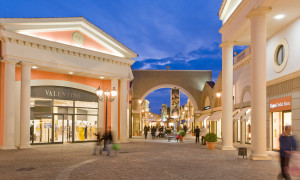As we’re closing out this Christmas shopping season, we’re thinking about all those expat arrivals who are experiencing serious retail culture shock in Europe. And as Martha Stewart used to say, it’s a good thing ….
Old hands should have told you: Shopping in Germany, the Netherlands, Luxembourg and other European countries is an entirely different experience, and not just because of the unfamiliar brands or terms. Unlike the anarchy of Forever 21 in the mall or a T.J. Maxx store at the strip center back home, there’s an orderliness and neatness to European stores. There are knowledgeable employees with the time and interest to help you and answer your questions.
Merchandise is placed back on the shelf where it belongs, not left strewn on a table by the last shopper who went through.

LEENDERT TANGE
The reasons are not necessarily easy to explain. But Dutch store designer Leendert Tange of the Amsterdam-based store design and retail consulting firm Storeage has some interesting observations.
Much of the difference, Tange says, has to do with space and residential patterns. “The suburbs” is a relatively new concept to European cities and, consequently, so are suburban malls.
“We live in density, with concentrated populations, and so there’s a premium on clarity of message that breaks through the clutter,” Tange says. “As a result retailers, try to organize their products as cleanly as possible, not to get lost but instead to be found quite easily.”
Speaking of space, stores tend to be smaller. “Due to older building structures, the design history of Europe is rooted in maximizing space and efficiencies, with cleaner designs and better organizing principles that tend to be more effective.”
Tange has a fascinating historical explanation, too. “After World War II, the U.S. was focused on creating warm, cozy environments for the soldiers coming back home,” he says, “whereas Europe was rebuilding and restoring damage from the war. So there was an emphasis on industrialization, new production methods and modernism as the fast way to get things restructured and the celebration of clean design was born.” Finally, there is the old cultural explanation of Europe’s enduring respect for “the trade.”
Europeans working in stores had high regard for the jobs they’d been hired and trained to do. For many Americans, working in retail is a temporary gig, for the summer; or until they’ve finished school; or earned their college tuition; or gotten a “real job.”
Working in retail is not “a real job” for Americans of a certain age. They do the minimum required for minimum wage, and will not fold that sweater and place in back on the table unless they’ve been told specifically to do so or unless they know they’re being watched.
A few years ago, Old Navy built a new store in New York with an emphasis on a clever merchandise display strategy that required merchandise constantly being refolded or rehung. But the economies of the store did not call for enough staff people to be hired to maintain the merchandise presentation system, so the strategy fell apart.
You’ll find it quite the opposite in Europe, whether on Oxford Street or Rue de Rivoli or Via Monte Napoleone. And, by the way, it’s not only true in European high fashion.
Primark, a fast fashion apparel chain based in Dublin, Ireland, is Europe’s equivalent of Old Navy or Forever 21. But, we were told this summer a two-story, 10,000-square-foot Primark store at K in Lautern urban mall, Kaiserslautern, Germany, has 180 employees.
Those employees are expected to be always on the lookout for merchandise that’s out of place or not correctly displayed.
Nor is it just Primark. You’ll find the same attention to detail at European retailers like Zara (from Spain), Topshop (from the U.K.) and H&M (Sweden).
However, says Tange, there’s another cultural/psychological differentiation at play here.
“In Europe, shoppers see disarray at an H&M store or Primark and think it’s poorly run and unclean,” he says. “In the U.S., a shopper seeing the same disarray assumes the prices will be low.”














